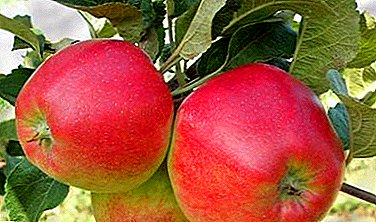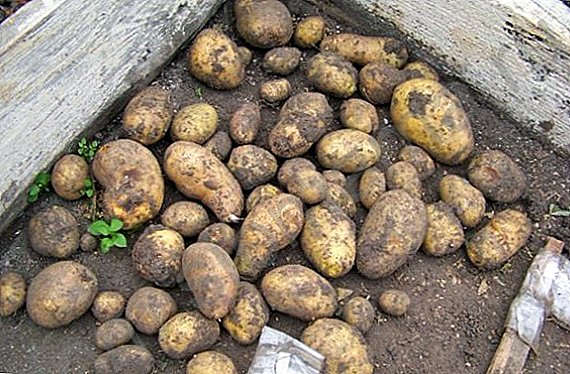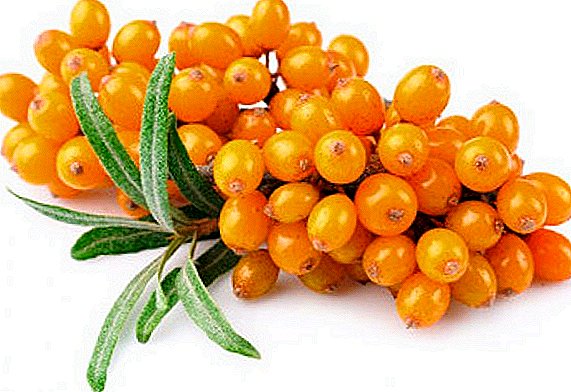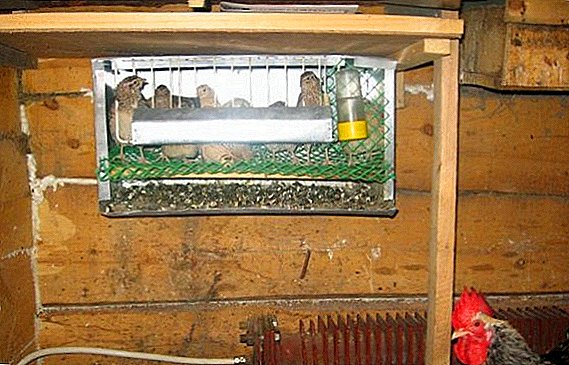 Many people know that quail meat has dietary properties, it has a lot of vitamins and nutrients. Quail meat and eggs are priced when selling much higher than the same products obtained from other bird species. Quite a few poultry farmers want to have a quail farm, but for many private farms there is a rather acute question about cohabitation of quails and chickens in one poultry house, so in this article we will try to figure out whether it is possible and necessary.
Many people know that quail meat has dietary properties, it has a lot of vitamins and nutrients. Quail meat and eggs are priced when selling much higher than the same products obtained from other bird species. Quite a few poultry farmers want to have a quail farm, but for many private farms there is a rather acute question about cohabitation of quails and chickens in one poultry house, so in this article we will try to figure out whether it is possible and necessary.
Is it possible to keep quail with chickens
If the bird is contained in a small private farm, where there is a shortage of free premises, then, in principle, joint keeping of hens and quails is quite acceptable. But if it is possible to keep the quail farm separately, then it should be used without fail.  What threatens quail cohabitation with chickens:
What threatens quail cohabitation with chickens:
- Diseases transmitted from chickens to quails (viral diseases, microscopic mites that eat down and feathers). Where a large chicken may not notice a temporary indisposition, the small bird will certainly perish. To prevent infection, the poultry farmer will need to pay special attention to preventive measures (baths from ash, sulfur, sand, etc.).
- Hypothermia. Quail - heat-loving birds, so the coop should be quite warm. For this, it is advisable to warm the walls of the room from the inside (foam, glass wool). It is also recommended to install several additional electric lamps, which in addition to the lighting will perform the function of heaters. And chickens and quail better rush in a well-lit room. Quails hardly endure cold, and cold often leads quail to death. Therefore, it is very important to monitor compliance with the temperature regime in the house.
Did you know? Birds are not the only earthly creatures laying eggs outside the body. Many reptiles, fish, amphibians and insects also lay eggs, which further need to be fertilized or incubated. Of the mammals, only duckbill and anteaters can lay eggs.
The difficulties of cohabitation
The cohabitation of chickens and quails in the same space can create a problem with the additional protection of all planes of the cage. The reason is that the quail legs are thin and red; at a distance, the chickens can easily confuse them with worms and try to peck. This problem can be solved simply: the poultry farmer will need to fit the sides and front of the cage with a metal or synthetic mesh so that between the cage and the net is created buffer zone about 20 cm wide.  Quail enclosure Quails require dry and warm air, and in a closed room the humidity is usually increased due to the miasma of feces and the collision of warm breath with cold air in the room. For quails, raw and frosty air is a source of colds. The poultry farmer needs to provide air vents for ventilation. They should open and close easily.
Quail enclosure Quails require dry and warm air, and in a closed room the humidity is usually increased due to the miasma of feces and the collision of warm breath with cold air in the room. For quails, raw and frosty air is a source of colds. The poultry farmer needs to provide air vents for ventilation. They should open and close easily.
Read more about the organization of ventilation in the hen house.
The room is ventilated daily for 5-10 minutes in the morning.
After moving to the chicken coop, it is possible to stop or reduce egg laying with quails. Of course, the reason may be a change in housing conditions or stress from moving to a new place of residence, but the poultry farmer should take a closer look at the behavior of chickens. These birds are pretty savvy birds and quickly realize that you can eat other people's eggs.
Important! When coexisting chickens and quails last need to arrange more bathing in the ashes of sand, which frightens the parasite of the puffedoat. These insects are often found in chickens. If, due to an oversight of the poultry farmer, quails will remain without feather cover, then they will most likely not survive the winter, because they will easily be exposed to colds.
How to place quail cages in the hen house
In the absence of another room, quail cages can be placed in a hen house, but it will have to take into account some of the requirements for the maintenance of heat-loving birds. 
- Temperature - in the chicken coop should be warm, the air temperature should not fall below +10 ° C, the ideal temperature is + 18-20 ° C. Cells should be placed away from drafts. There should be no sudden changes in temperature. If the temperature in the chicken coop starts to drop, the quails will start climbing up to each other to warm up, which may lead to crush and strangulation of the weaker and younger individuals.
- Accommodation - cells with quails are installed so that the chickens do not use the ceiling of the cage as a night roost. Otherwise, in the morning quails will be covered with chicken traces of life, because during the night chickens often defecate. The best way out of this situation is to nail a large plywood over the top of the box lid, the edges of which will go far beyond the perimeter of the cage roof. This will help the birds stay clean.
- Dimensions - when building a house-cage, about 100 square meters are allocated for each bird. cm. Standard sizes of quail cage: height - 25 cm, width - 45 cm, length - 1 m. The cage frame is made of wood, after which all planes (except for the roof) are tied into a galvanized grid. Ceiling plane can be made of plywood sheet. Rows of cells are composed of tiered to the ceiling. The upper rows of cages should not have a gap between the ceiling cover and the ceiling in the shed, otherwise chickens will spend the night there.
Important! On average, a cell area of 1 square. m can accommodate 75 individuals.
Video: chicken coop for quails and chickens
Feeding differences
As for the feeding of birds, here you need to take into account several important points:
- Chicken diet is much easier than quail. Some poultry farmers try to feed all of their birds with the same food to make it easier, but this is wrong, because the chicken food does not have those nutrients that quails need. And although special food for young broiler chickens is quite suitable for quail food, however, additional ingredients should be mixed into these mixtures: fish meal, crushed sunflower seeds and corn, dried chopped grass, and needles flour.
- If the room of the chicken coop is small, then it will not be easy to organize separate feeding of chickens and quails. In any case, the first to feed quails, as in the process of eating sloppy birds scatter food on the sides, and chickens pick up scattered leftover food and eat up.
- At first, the feeding process must be under the control of the poultry farmer, this is necessary in order to stop the bird fights for food. If in the herd a fighter, constantly bullying his relatives, appeared, then he should be isolated for a couple of days from the team. If you do not pay attention to the behavior of the aggressor, then other birds also begin to fight among themselves. After a few days of isolation, the bird can be returned to the hen house, but if the behavior of the squabbler does not change, the individual is sold or slaughtered for meat.
- Drinking water must be clean. For chickens, drinkers with water are installed on the floor of the chicken coop, for quails, drinking containers are firmly fixed on the walls of the cages. Drinkers designed for chickens should have a structure that does not allow them to overturn. In winter, for chickens and for quails, the water should be warm. Quail from cold water can catch a cold, and a chicken drinking cold water will not rush during the winter period.
- To provide their pets with vitamin C for the winter, farmers have been harvesting rowan berries since the fall, growing in large numbers in deciduous forests and forest plantations. Dried and passed through a chopper, the berries are regularly added to food for birds throughout the winter. Store dried berries in the house or another in a dry and warm room.


If you comply with all the above conditions, then the chicken herd and quails will be able to live on the same territory, the main thing is to control their communication during the first joint decade.
Did you know? The largest eggs are from ostriches, the largest birds on our planet. While most ostrich eggs weigh about 1 kg 360 g, an ostrich female living on a Swedish farm laid a record holder weighing 2 kg 570 g in 2008. This egg is heavier than the weight of three dozen chicken eggs combined.
Why quails stopped carrying eggs
Quite often it is possible to observe a situation when after moving to the chicken house at the quail the egg production drops or completely stops.  The reasons for this may be:
The reasons for this may be:
- temperature too low in the hen house;
- quail eggs eat chicken.
Learn more about breeding quails at home, as well as how many eggs a quail carries per day and what egg production depends on.
Temperature conditions
In addition to the three summer months, the rest of the year, the air temperature in the house is controlled by a wall-mounted thermometer. At subzero temperatures, quails rush less frequently or completely stop egg-laying. In addition, the frosty air can provoke pneumonia or a cold in tender birds.
Thieves
The chicken lurks when a broken egg rolls out of the quail cage, and pecks at it. If chickens were seen by a poultry farmer in theft, then it is necessary to protect them from the tray for eggs in cages. For this you need to create a barrier that can not overcome the chickens.
Did you know? Hummingbird's smallest eggs are the tiniest birds in the world. They weigh only 0.2 g. Hummingbird females lay only two tiny eggs in one laying.
Pros and cons of sharing content
If you decide to combine in one hen house the maintenance of two species of birds at once, then you should know what benefits you will get from this, as well as find out what kind of trouble may arise.  Positive sides:
Positive sides:
- Big saving of feed in the joint keeping of poultry - the chicken carefully picks up and pecks the scattered remains of the quail food. As a result, less food is wasted, the chickens are full, the floor in the coop is clean.
- The temperature in the room - because in one chicken coop contains a large number of living creatures, respectively, the temperature of their bodies, the air is heated. And although additional heating may be necessary, the air temperature will still be significantly higher than with a separate content of hens or quails only.
- Facilitation of care - it is much easier and faster for the farmer to service all feathered pets (set feed and water) in the common room.
Find out if you can keep together chickens of different ages, chickens with rabbits and ducks.
Negative sides:
- The spread of parasites and diseases between two groups of birds of different breeds forces the poultry farmer to constantly carry out preventive measures among both groups.
- Possible injury quail from aggressive chickens, as well as frequent theft of quail eggs.
Experience the joint maintenance of chickens and quail: reviews

From the above it follows that it is quite possible to settle chickens and quails in the same room. But before doing this, the poultry farmer must approach this issue responsibly and weigh the pros and cons.












